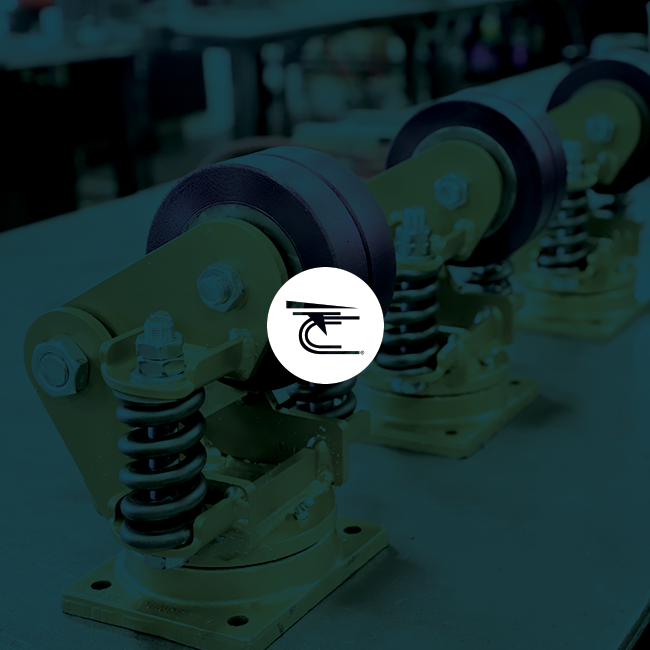

Whether you are brand new to casters or you need a refresher course, this guide will help you learn more about the various components that make up industrial casters. Knowing the facts can help you make better decisions for your workplace. In the end, that could improve safety, save you money, and make your workplace more productive.
There are many components and intricate features that go into the making of casters and caster wheels.
The top plate is the piece of metal that secures the caster unit to your cart or rack. It comes with all the various mounting holes necessary for rivets (kingpins), king bolts, and more. If there is a swivel, the top plate will contain a load race for the ball bearings, as well.
Caster Wheel
The caster wheel is the central part of the entire caster. It is the part around which the tread fits, as well. Steel, aluminum, and various other materials are all used in a wheel’s construction, and your specific needs will determine the proper makeup. Some materials are much stronger than others, but some can withstand rust and corrosion better than others.
Ultimately, you will need to pick the right balance. A Caster Concepts Representative can help you determine the right combination based on your needs.
The tread is the material that fits around the caster wheel. It is the material that comes into contact with the floor. Polyurethane tread is by far the most common, though rubber and certain other materials are also utilized. Like the wheels themselves, the tread you choose can have a huge impact on the caster’s operation. Some treads are designed to be ergonomic by reducing friction and push force (like Twergo), while other treads are designed to absorb shock with air or foam (pneumatic) and protect the load inside the cart or rack.
Swivel casters turn from side to side, which is ideal in many applications. The swivel consists of ball bearings, either sealed or unsealed, that allow the entire caster to move uninhibited. Swivels can move up to 360 degrees, but swivel locks can either shorten this range or stop the caster from swiveling altogether. Not all casters have swivels, so be sure to consider your needs before you order.
In many industries, caster brakes are incredibly important for safety, and they come in several varieties. Of these, foot-operated brakes are the most common, and they are also quite efficient and effective.
These brakes stop the cart from moving when left unattended or when it is being loaded. When ordering casters, be sure to consider the different types of brakes. You’ll find a variety of types to help you determine which one is best suited for your company’s unique needs.
Casters, of course, have many more parts, including things like the legs, thrust ball bearings, yoke base, and more. However, the parts listed above are the ones you will need to concern yourself with most when placing an order or when you talk to an engineer about developing the right caster for your company’s individual needs. If you have any questions, be sure to contact a Caster Concept’s representative. We are experts in material handling applications.